Rock On – Grado SR80e On-Ear Headphones Review
Grado SR80e is one of the finest headphones for those who enjoy a colorful, dynamic midrange, and a really sparkly treble, but don’t require a lot of bass. They are priced at 100 USD, and they will be compared with Brainwavz HM100, 1More Triple Driver, and AIWA ARC-1. The pairings will include FiiO M6, iBasso DX160, and Shanling M2X.
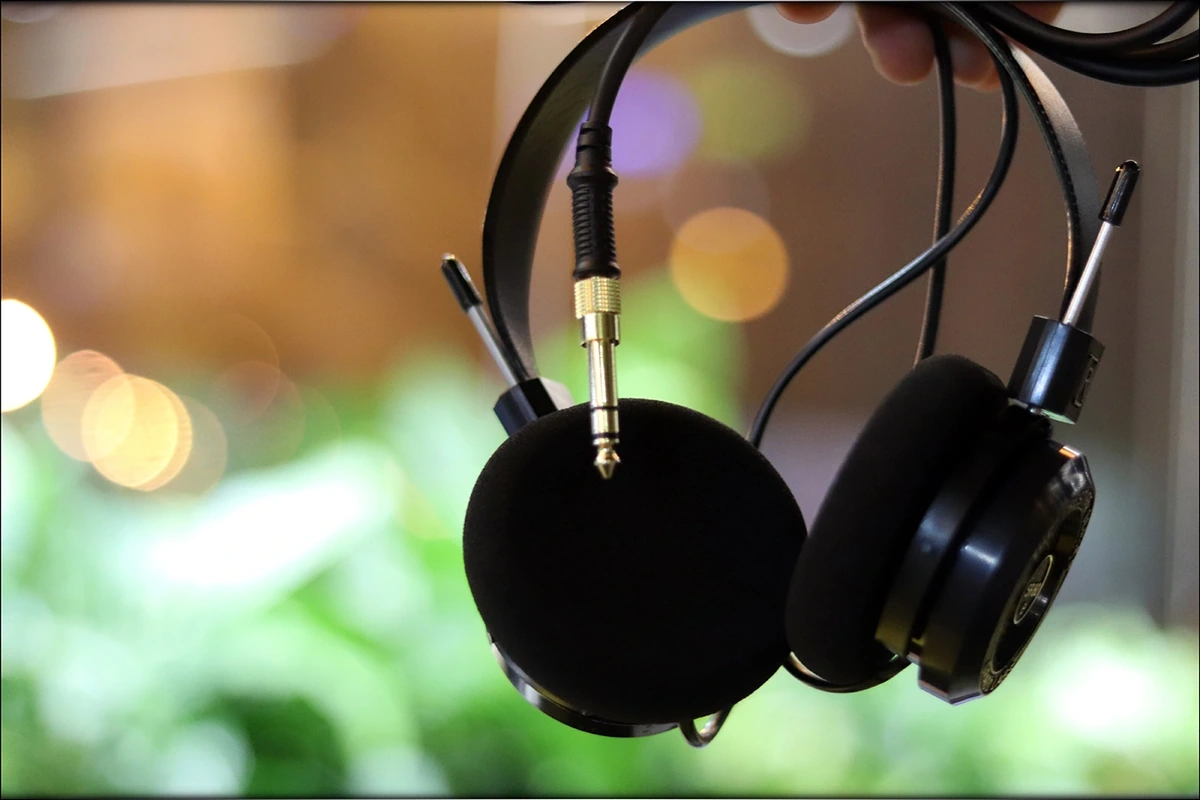
Introduction
Grado doesn’t need much of an introduction, being one of the oldest, best known audio companies in the entire world, with an excellent track for customer support, as well as an excellent track for the build quality of their products. They are best known for pick-ups, and for high-end audio products for vinyl enthusiasts, but they also make some amazing headphones, and even when looking at something really affordable, like the SR80e, they manage to offer something special, magical, and most definitely intriguing for those who are on a budget.
It should be noted that I have absolutely no affiliation with Grado, I am not receiving any incentive for this review or to sweeten things out. I’d like to thank Grado for providing the sample for this review. Every opinion expressed is mine and I stand by it, the purpose of this review is to help those interested in Grado SR80e find their next music companion.
Product Link
You can get Grado SR80e from www.amazon.com here: https://www.amazon.com/Grado-SR80e-Prestige-Series-Headphones/dp/B00L1LXOWS/
About me
https://www.audiophile-heaven.com/p/about.html
Packaging
First things first, let’s get the packaging out of the way:
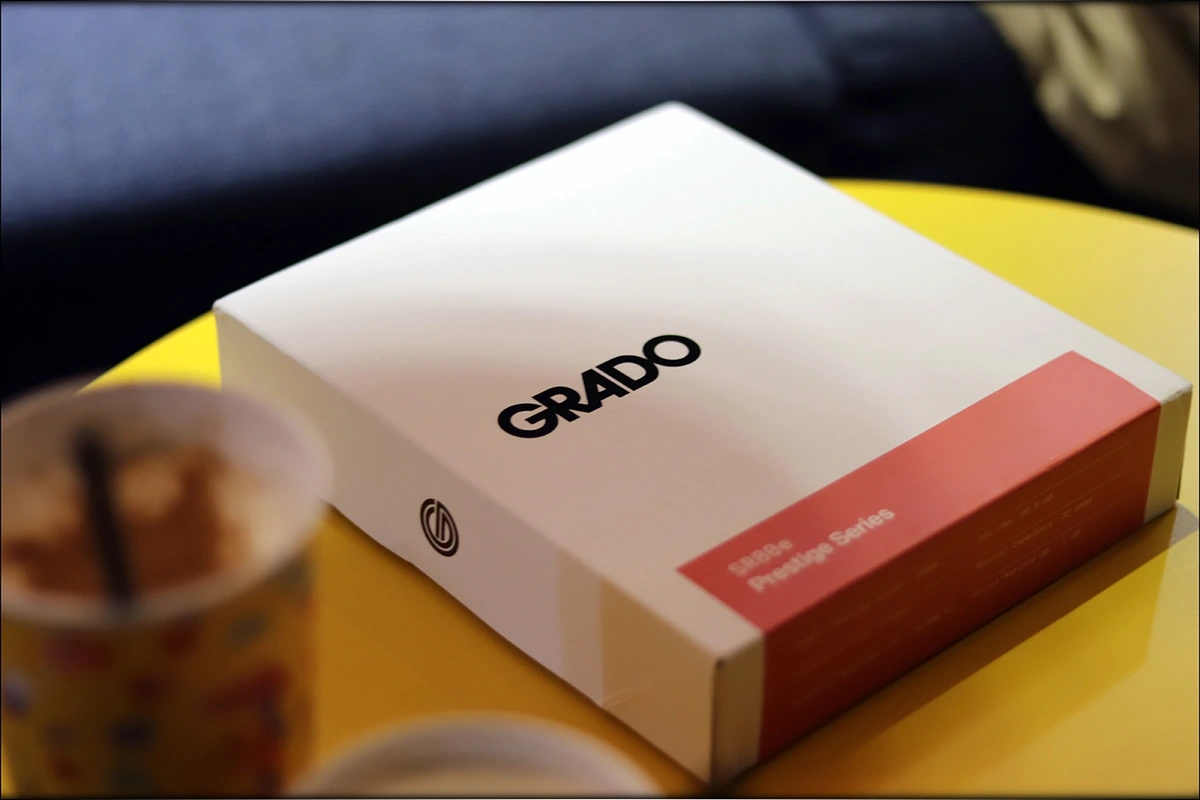
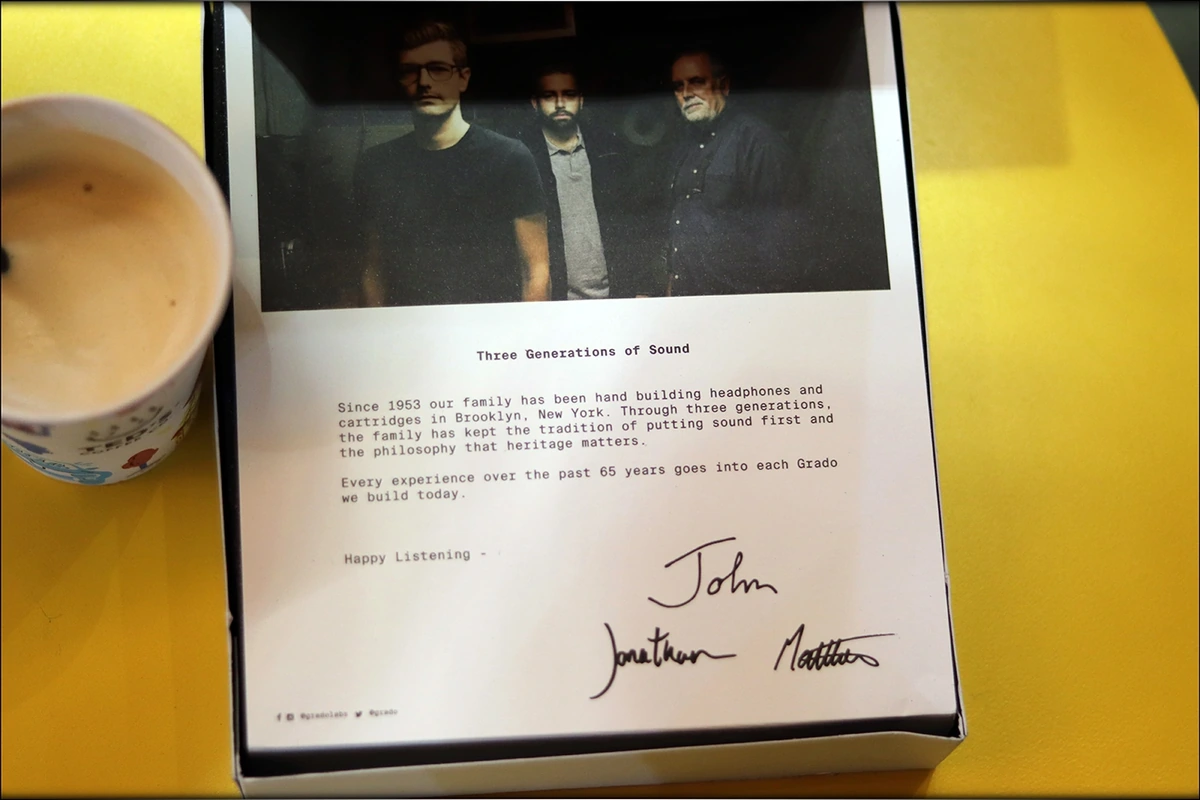
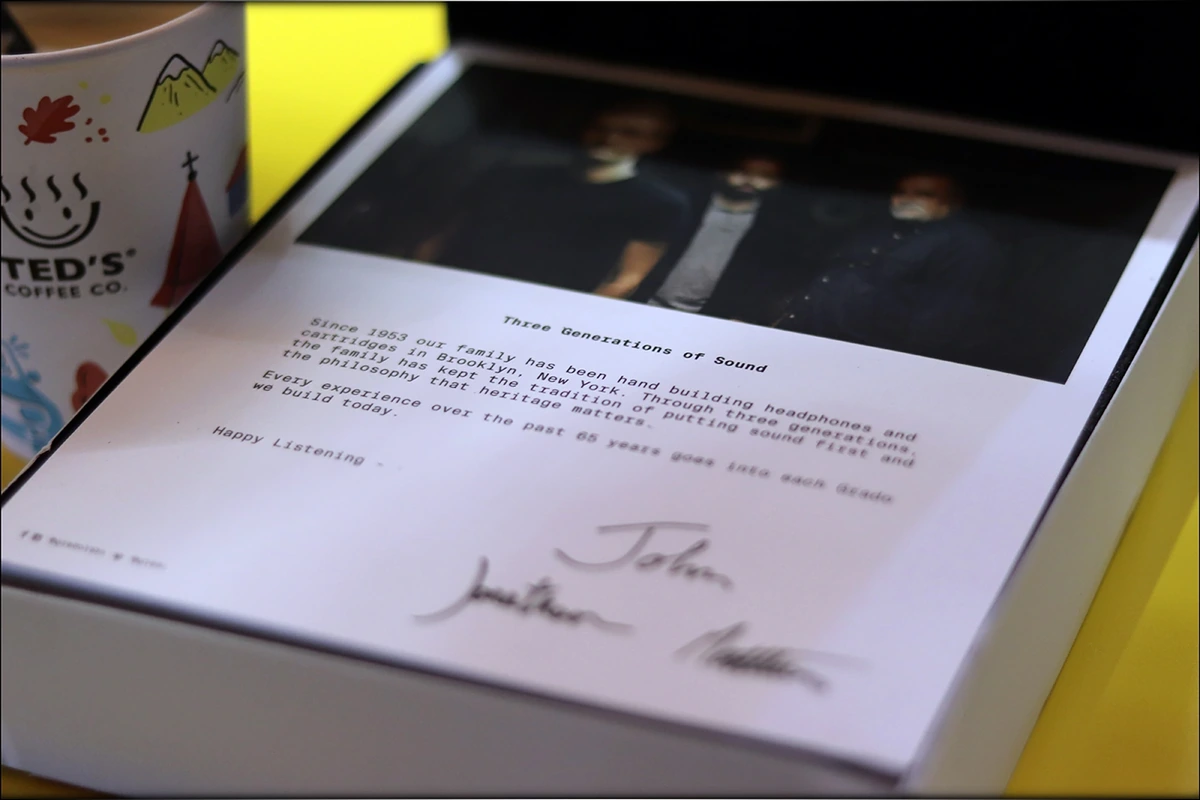

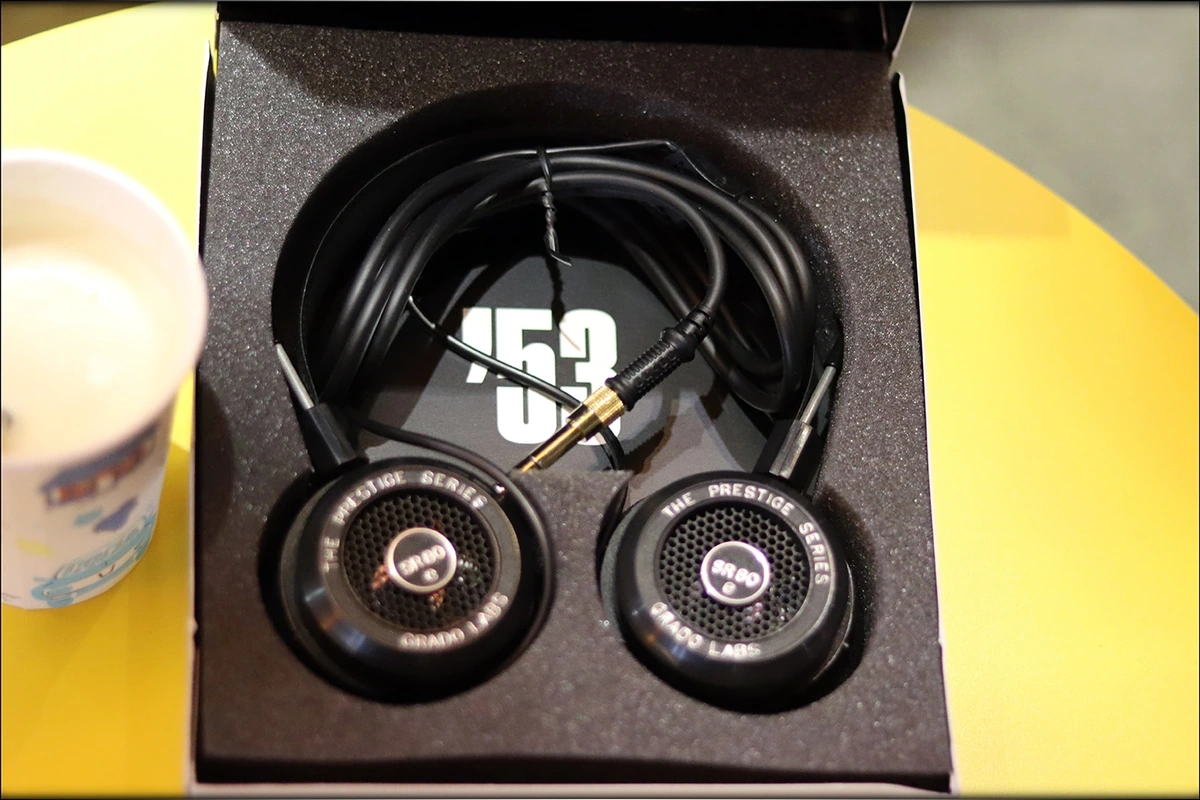
This is officially the first Grado headphone I have unboxed, and it left a really good impression on me, Grado really knows how to make a nice package, and even for a headphone that’s only 100 USD, they make what I could call a really stylish and high-end presentation.
The package has all the info about the headphones on it, and it includes the headphones. The only extra accessory you can find inside is an adapter from the 3.5mm plug to 6.3mm, so you can use SR80e with a multitude of sources.
Grado is known, as a company, for approaching the enthusiast, and the high-end passionate, so many of their headphones used to have their cables ended in a 6.3mm plug only, and it feels refreshing, and really handy to have the cable end in a mini plug, as I could test SR80e with all the portables I have around.
If anything would be missing from the package, that is a set of extra pads, as the originals are easily replaceable, but given the 100 USD price tag of SR80e, their entire package is pretty much perfect.
What to look in when purchasing a Flagship Headphone
https://www.audiophile-heaven.com/p/what-to-lookl.html
Technical Specifications
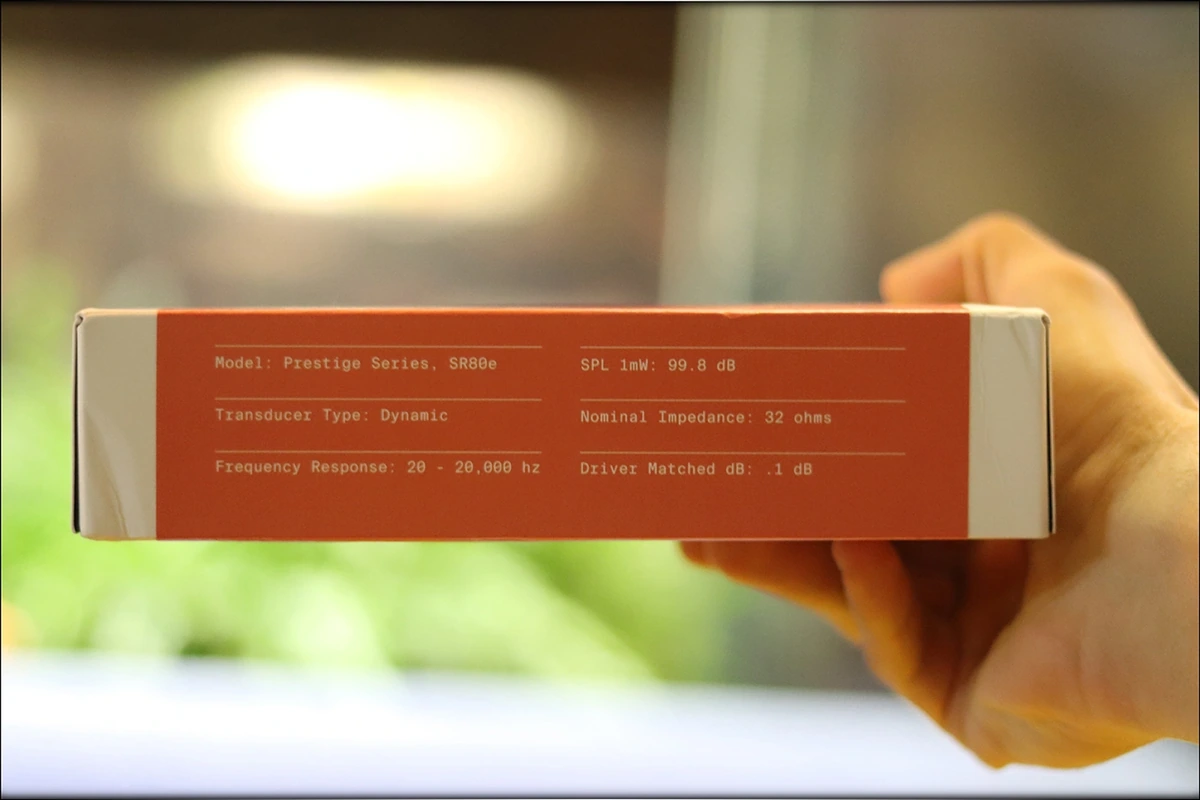
Build Quality/Aesthetics/Fit/Comfort
Having an impedance of 32 OHMs and a SPL of 99.8 dB means that SR80e is easily driveable form a portable, even from most smartphones, which is great news for those midrange and treble lovers.
The fit of the SR80e is different from what you may expect. They are an on-ear design for sure, but their cups are much much larger than they look like in photos, they are enough to cover most of my ears. While this isn’t ideal for everyone, my understanding is that high-end grado headphones are even larger, and they fit even better, so I’m really curious to hear one of those higher-end models and see if the comfort is heavenly now.
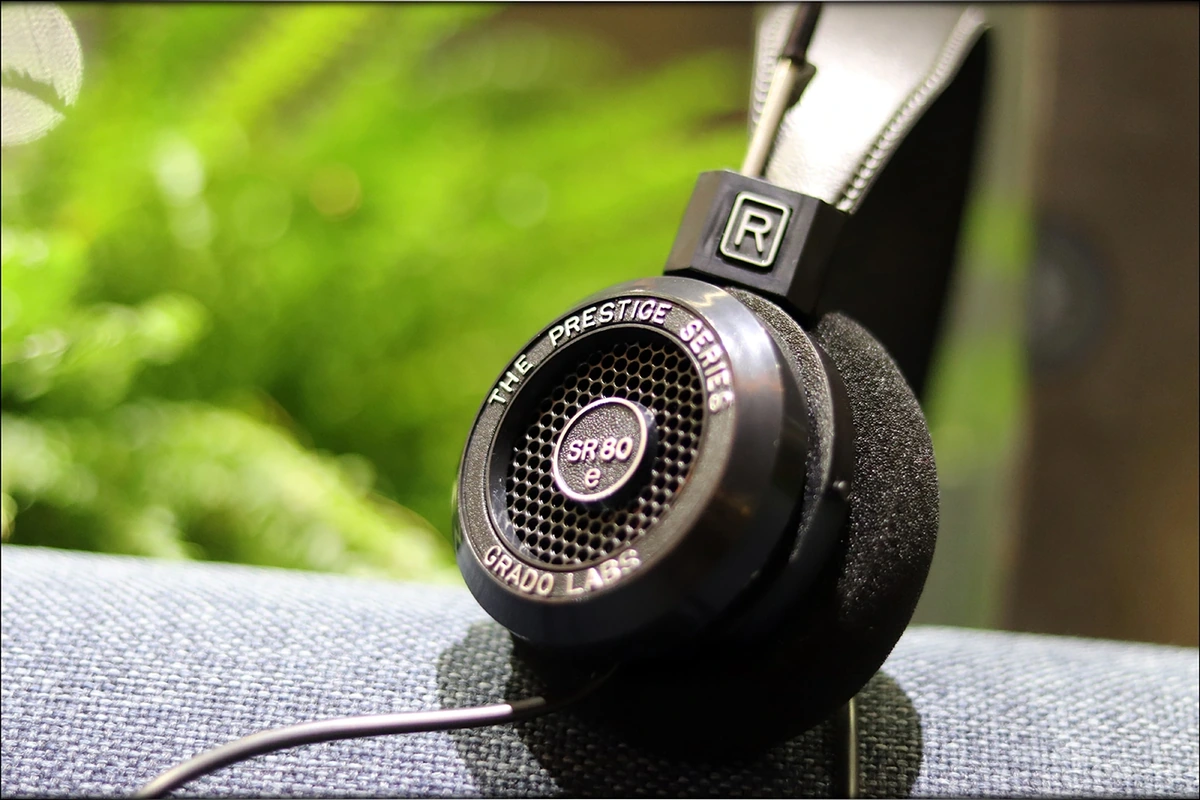
The aesthetics are pretty retro and old-school, but Grado made sure to keep what was best about their design, and improve on it. The cups can swivel, and the size can be adjusted. The mechanism for adjusting the size of the headphone is actually pretty secure, and the entire thing feels high-quality. The headband has just the right tension to feel natural on my head, and the clamping force is high enough for walking, and for doing daily activities, like HIFIMAN Sundara, but it isn’t tight enough for them to get too hot, or for the sponge to force its way into my head (Ultrasone Signature DXP is a great example of a headphone that’s really tight).
If there’s anything that leaves to be desired about the SR80e in terms of comfort, that’s the fact that the sponge is indeed touching your ears, and it can get hot during usage, especially during summer, but it breathes better than pleather materials, so most 100-USD headphones won’t really have a better comfort either, especially other on-ear designs.
The headphones are open-back, which is rare for this price range, and SR80e has a really open sound thanks to that, but that also means that they leak quite a bit, and they don’t isolate very well from the outside noise. Every headphone has some degree of passive noise isolation, even open-back ones, but if Sundara was one of the very open ones, then something like Rosson RAD-0 was a pretty isolating open-back headphone. Closed-back headphones are much better at separating you from the outside noise, and if you don’t want anyone to listen to your music, there are options like the MOOH M0 headphones out there.
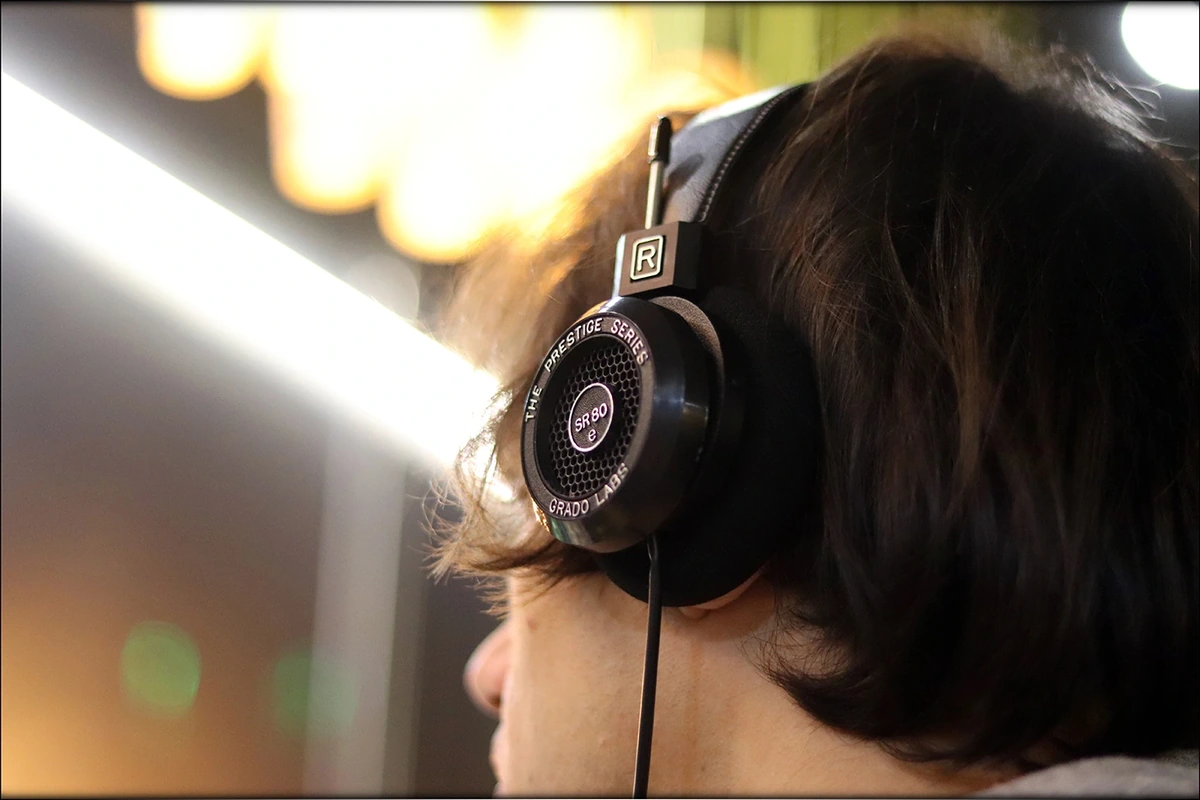
The cables of SR80e are not detachable, and this has been the tradition for Grado entry-level headphones for a long while, but happily the default cable is long enough, and of good quality. The cable is not microphonic, so you don’t have to worry about sound traveling to you through the cable, although it is a bit long for your casual walk, so you may have to fit it in a loop for the best results while walking.
Video Review
Link To Youtube Video Reiew: https://www.youtube.com/watch?v=dYb56iBNdSM
Sound Quality
I will start by saying, from the start, that the actual detail, quality and clarity of SR80e easily qualifies the sonic ability of SR80e for being in the same level as most 200USD headphones. They may have better clarity and detail than Meze 99C, especially if you don’t EQ the 99C, but Grado has other models in that price point which should be even better, and which I will be testing really soon.
This means that there’s a catch, right?
Actually, yes. The whole sound of SR80e is focused on the mids and the treble, and there’s a colorful, dynamic, punchy midrange, with an even punchier treble, with a lot of sparkle, detail, and presence. The downside is that the on-ear design, combined with the breathable sponges, leads to a roll-off in the bass, starting from about 80Hz, and the roll-off gets stronger the closer you get to 20 Hz. This doesn’t mean a lot, if you listen to rock and metal, and this is the music style I feel SR80e was tuned the most for, but it will be quite something if you’ll try to listen to some EDM or Trap.
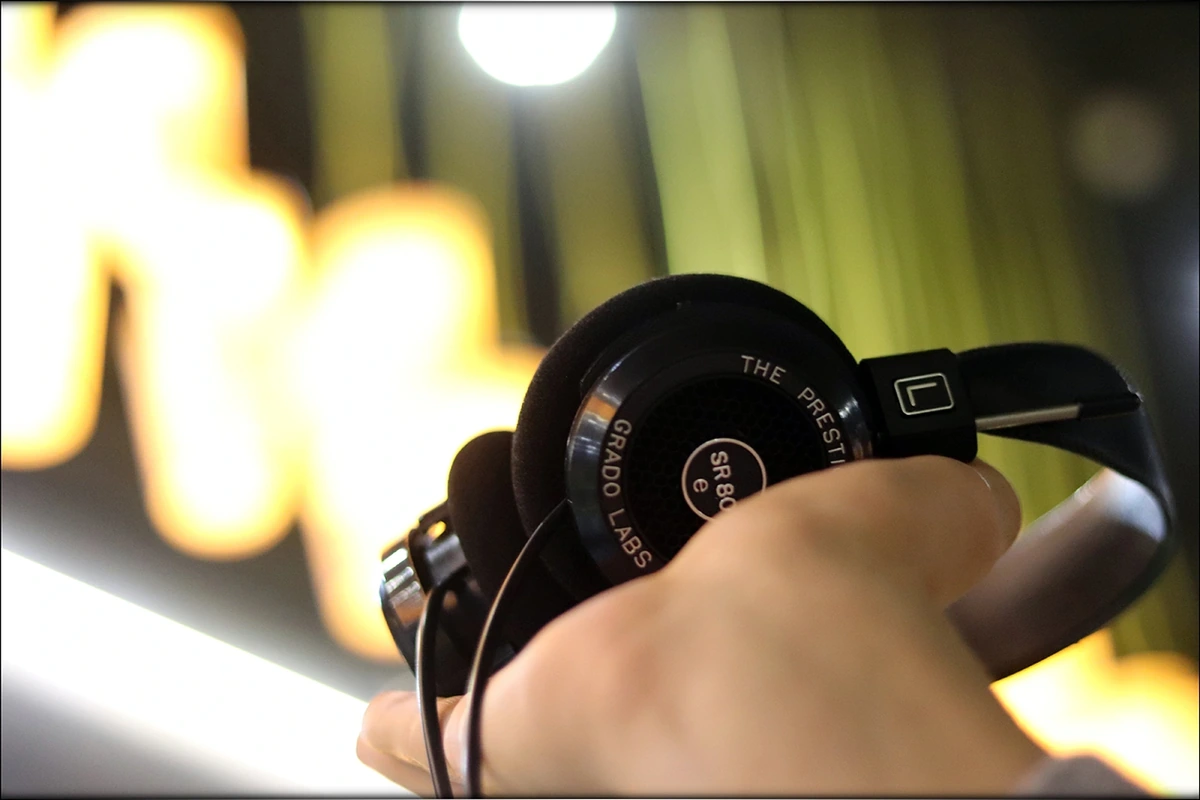
The bass is clearly the weakest link from SR80e’s sound, and it is a bass that relies heavily on the mid-bass and upper bass presence rather than on the sub-bass. This being said, it is quite tasteful, it has a natural to slightly slow decay, but it works really well for rock, punk, metal, and all that is lively. Songs like Iron Maiden – The Trooper sound good, and the roll-off in the bass is barely noticeable, while the guitar solos are juicy, and the cymbal crashes have a natural ringing to them.
The midrange is a strong point for SR80e, because it has excellent dynamics, punch and clarity. Everything is pushed pretty forward, which means that the soundstage is pretty intimate, but for rock and metal this means that you feel like you’re in the first row at a concert, which for most metalheads is the best feeling in the world. The guitars especially, both acoustic and electric guitars are presented tastefully, and there’s a great deal of extension in the treble as well, which means that every note sounds natural. Songs like System Of A Down – Chop Suey manage to sound forward, the attack is great, and a headphone that’s a bit more aggressive is great for this type of music.
The saving point for the stage of SR80e is actually the great imaging and stereo separation. Instrument separation is also great for 100 USD, and you can clearly separate guitars from the drums, there’s no bloat and no mushiness, no muddy sounds.
The treble has great extension, but it doesn’t have a dry character, so it is not harsh. This being said, it is really forward, and unless you love an impactful / interesting presentation, and unless you want to feel like you’re right next to the band, it may be a bit much. In fact, Grado is pretty well-known for lively treble, and while my personal taste is to like quite a bit of treble, they are treble-happy, so don’t focus on them if you want a smoother experience. I love a more sparkly treble, even for Jazz, because I enjoy the sounds of cymbal crashes, but once again, SR80e shows their ability best with Rock and Metal, songs like Bon Jovi – It’s My Life also work great for SR80e, because the voice is clear, and the background effects are present with good separation from the forward guitars, and all sounds separated enough from the drums, so SR80e sounds pretty sweet and tasty with Bon Jovi too. The bass roll-off doesn’t make itself heard (pun intended), because there’s enough upper bass and mid bass to give the song good weight and substance.
Portable / Desktop Usage
As I see it, SR80e is a dual-purpose headphone. It has a price that’s pocket-friendly enough to be taken outdoors, despite being open. The driver also seems to be fairly well protected from dust and debris, so you don’t need to worry about damaging them when taking them outdoors. This being said, they leak a bit much for your typical bus ride, so you may get some unfriendly looks if you blast rock and metal through them (assuming this is what you’ll be paying, it is their forte after all).
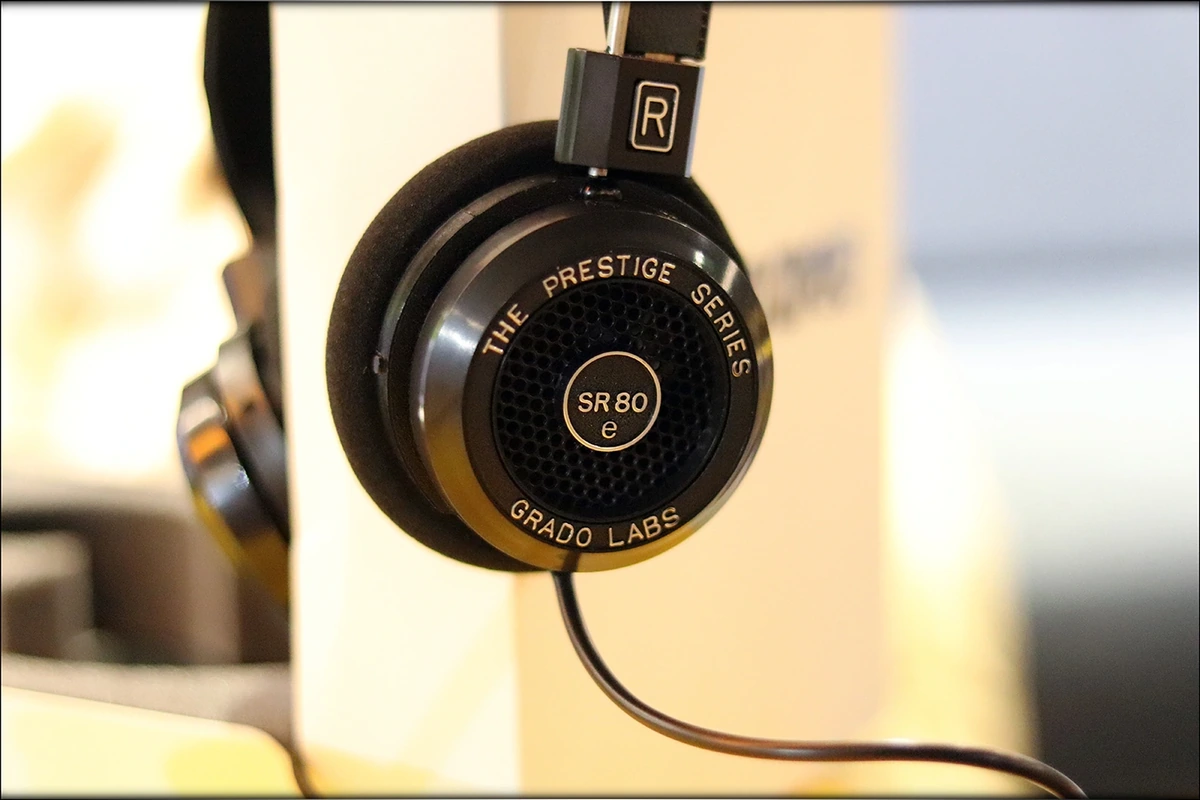
On the other hand, they are light, have enough cable, and are comfy enough to make a good desktop headphone as well. Maybe not a great one for doing mastering and music work, but for listening to music and enjoying music, especially songs like Guns N Roses – Welcome To The Jungle will be fun to jam to through the SR80e.
They don’t scale that much with the source, so you don’t need to invest in a Mytek Brooklyn DAC+ to enjoy them, but they do get a bit better with the source, if you have a good one. Earmen TR-AMP is a great DAC/AMP to use for SR80e, and so are iFi xDSD, Chord Mojo, or FiiO Q5s. As far as DAPs go, an iBasso DX120 would be a perfect match, and if you’re looking for a really minimalistic setup, something like FiiO M5 would be pretty awesome.
On the other hand, if you’re going to use SR80e at a desktop, a FiiO K5 PRO would make a great companion, but so would an xDuoo TA-10 if you wanted to make them thicker, and heavier, and to smooth out some of the treble. That defeats the purpose of their tuning a bit, but if you’d enjoy them more, I would be more than happy to advise you to do it.
Comparisons
The main competitors for Grado SR80e are all considerably more expensive than it, and that is because not only it punches above the 100 USD price point in terms of clarity, dynamics and impact, but there aren’t many 100 USD headphones out there that come close in terms of build quality, and craftsmanship. The competitors are Brainwavz HM100, 1More Triple Driver, and AIWA ARC-1. If Meze 99C wasn’t 300 USD, it would make a great comparison, because it shows how two companies went for two totally different signatures with their headphones. The OVC Tube Headphone would also make a great comparison because the midrange and the treble are pretty similar between it and Grado SR80e.
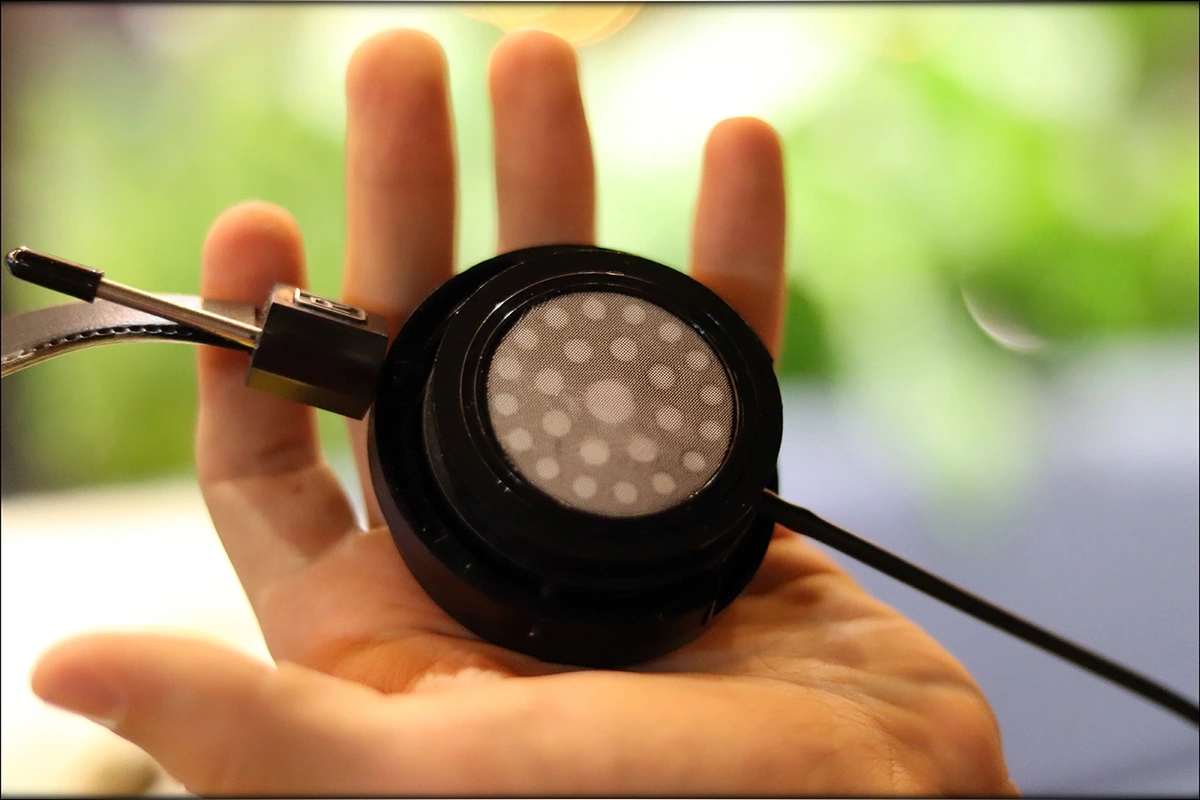
Grado SR80e vs Brainwavz HM100 (100 USD vs 200 USD) – Starting with the HM100, a really nice headphone at their 200-USD price point, from the get-go, the package is much better for HM100. The comfort is also a bit better, but HM-100 is the kind of headphone that gets a bit hot as well, and although their earpads are soft, and their headband also pretty soft, they have some hotspots in the fit, making the fit of the two comparable. The sound is really different, and where SR 80 e is a really sparkly, and colorful headphone, the mids of HM 1000 are the kind that are recessed, and quite a bit, where the bass of HM100 is boomy, and their entire sound colored dark, the sound of SR80e is bright, and it is a colorful and dynamic headphone. The soundstage is far larger on HM 100, where the instrument separation is a bit better on SR 80e, and the imaging is also a bit better on SR80 e. I would pick SR 80 e for acoustic, rock, punk, metal, and would pick HM100 for EDM, electronic, Trap, and all the music styles where the bass matters quite a bit, since HM100 has a considerably better in the sub-bass and also has a good rumble for their price point.
Grado SR80e vs 1More Triple Driver Headphones (100 USD vs 200 USD) – The 1More Triple Driver is a really similar situation to HM One Hundred. We’re talking about the Triple Driver Headphones, and not the IEMs, as the naming of 1More can be a bit confusing, they have both a Triple Driver Headphone, and a Triple Driver IEM. In terms of comfort, the triple driver is actually not more comfortable than Grado, and actually, I prefer the fit of SR80e to that of the Triple Driver, the Triple Driver is pretty tight, and although their earpads are softer than the ones Grado uses on their SR80e, there are hotspots on Triple Driver which are not present on SR80e. The 3-Driver Headphones are bassy, warm, but also kind of unnatural in the midrange, and they have some peaks towards the upper midrange, which can be a bit fatiguing. By comparison, SR80e is more balanced, has a more natural midrange, and SR80e has better extension in the treble. Listening to EDM and electronic music with Triple Driver is a much better experience, because it has a ferocious bass and sub-bass, but they aren’t quite as detailed and as sparkly as SR80e which rocks for Rock and Metal.
Grado SR80e vs AIWA ARC-1 (100 USD vs 180 USD) – AIWA ARC-1 is a pretty balanced headphone, and even has bluetooth, so for 180 USD, it is a really excellent choice, but that is, only if you prefer using the Bluetooth. ARC-1 is actually more comfortable than SR80e, but they aren’t fully over-the-ear either, and their fit can best be described as borderline over-the-ear, because for my medium-sized ears, they still fit on-ear. They get a bit hot during summer too, just like HM100 and Triple Driver, and all of the headphones in this price range will have a similar comfort in the end. The ARC-1 sounds better on Bluetooth than they sound wired, they have better soundstage, imaging and instrument separation, and they have a more balanced, coherent midrange and overall sound. By comparison, SR80e doesn’t have bluetooth, but there is a version of Grado with bluetooth out there, which I will hopefully be reviewing in the future, and comparing the sound side-by-side reveals that SR80e has a more natural midrange, with better treble extension, and a brighter overall sound, where ARC-1 has better bass and sub-bass, and fares better for EDM, Industrial and Jazz, but SR80e fits better for rock and metal, including more aggressive styles.
Recommended Pairings
I would actually pair SR80e with a larger number of sources, especially high end ones, or at least more expensive sources, but given their 100 USD price point, I tried my best to stay within what was acceptable in terms of pairings. Shanling M2x seems like a great one, and iBasso DX160 too. FiiO M6 is also pretty great. One pairing that you will want to consider is xDuoo TA-10, but you may also want to take into account getting a HIDIZS DH1000 as both are smooth and warm, so they make ease out the treble and the midrange of SR80e, all while thickening their sound.
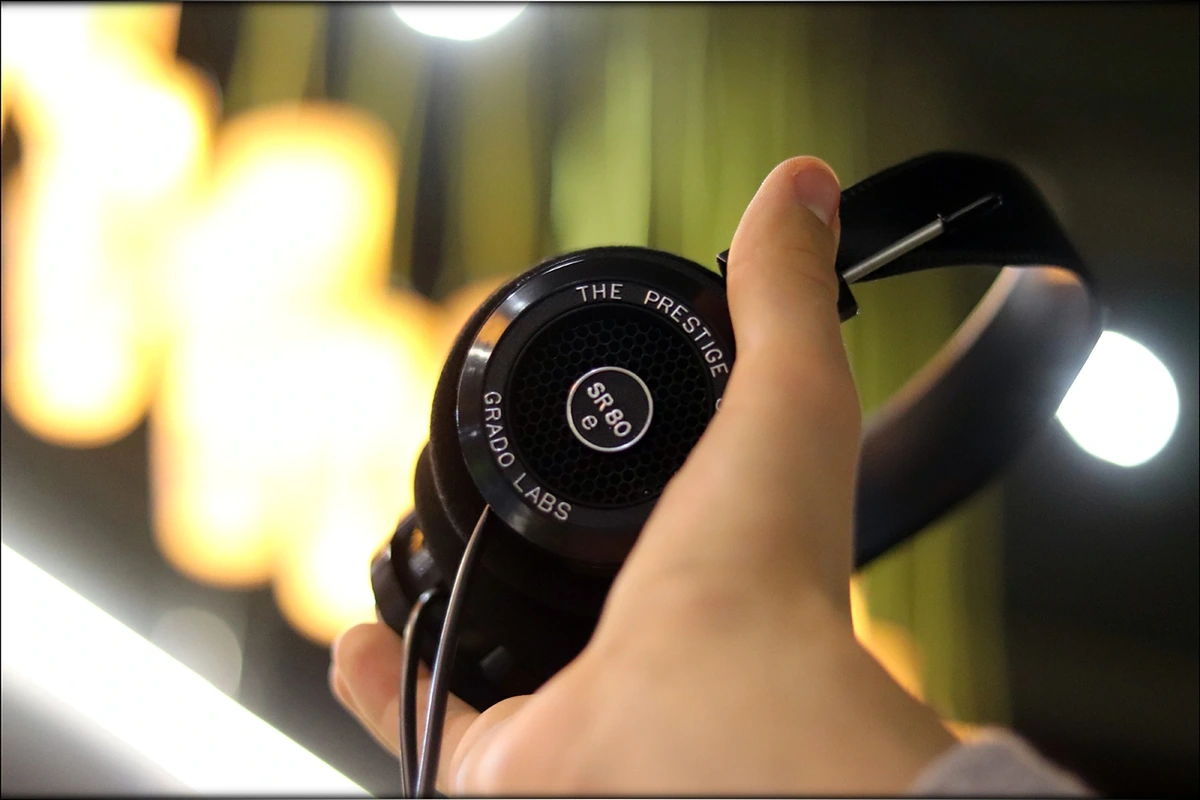
Grado SR80e + iBasso DX 160 (100 USD + 400 USD) – This is the most expensive DAP I have on this list, and I could have gone with DX150, because that one comes with an AMP module that is thick, smooth and warm from the factory, but I wanted to highlight DAPs and sources that make the most out of the original SR80e signature, not ones that tone it down. This is because this one headphone has some beauty of its own in the sound, for treble heads, and for those who like rock and metal for the mids and sparkly treble. iBasso DX120 can also drive SR80e just fine, but if you want Tidal, and if you want to make the most out of Tidal, also make the most out of most streaming services out there, if you want to have a DAP that’s as versatile as it is ergonomic and beautiful, the DX160 also provides a clean, crisp sound, that highlights the excellent extension, sparkle, and overall detail of SR80e, as well as most headphones in the sub-1000 USD price range, but also is able to drive some really expensive headphones, like Rosson RAD-0.
Grado SR80e + Shanling M2X (100 USD + 220 USD) – Shanling M2X is one of the more interesting DAPs because it has a really sweet midrange, but also good treble sparkle, and for the price point, it has access to Tidal and other streaming services, making it a pretty good purchase. The thing that made me fall in love with it the most was the ergonomic and the build quality, though, and the fact that it can actually drive some pretty interesting headphones for the price point. SR80e is one of those headphones, and M2X gives them a really nice imaging and clarity, but also a good amount of sparkle in the entire sound, and rather than taking out some of the energy that the sound of SR80e has, it highlights it and offers a good way to enjoy the Grado experience.
Grado SR80e + FiiO M6 (100 USD + 130 USD) – FiiO has many mini DAPs, including the newly released M3PRO, and the M7, and the M5, but nothing compares to M6 in terms of how well balanced the device itself is. The size is diminutive, but it is ergonomic, the shape is rounded, but also practical, and the sound, although not the strongest in the entire world, and especially not enough to drive all headphones out there, it is a great match for the SER80e, and their sparkly, energetic, colorful nature. There’s a good amount of detail and clarity from this pairing, and it is one of the least expensive options for driving the SR80e, besides the FiiO BTR5, which sounds even better than M6 at times, but which is more of a DAC and on wire, if you want to experience the maximum quality it can deliver.
Value and Conclusion
If there’s one thing clear from the start, the Grado SR80e has outstanding value. Furthermore, they don’t have a very compelling package, but Grado packaged what is a 100-USD Headphone in a beautiful way, they included a nicely printed booklet about their company and their story, truly a job well done in an american style.
The build quality is pretty great, no odd creakings, and the cables are of good quality. The fit and comfort won’t be the best since it is an on-ear design, but the happy part is that your ears can breathe and you won’t get quite as hot as you’d get with pleather and leather imitation that’s usually found at the 100-USD price point. The headphones are open-back though, so you may need to take into account both the leakage and the poor passive noise isolation if planning to use them outdoors, or in a silent environment.
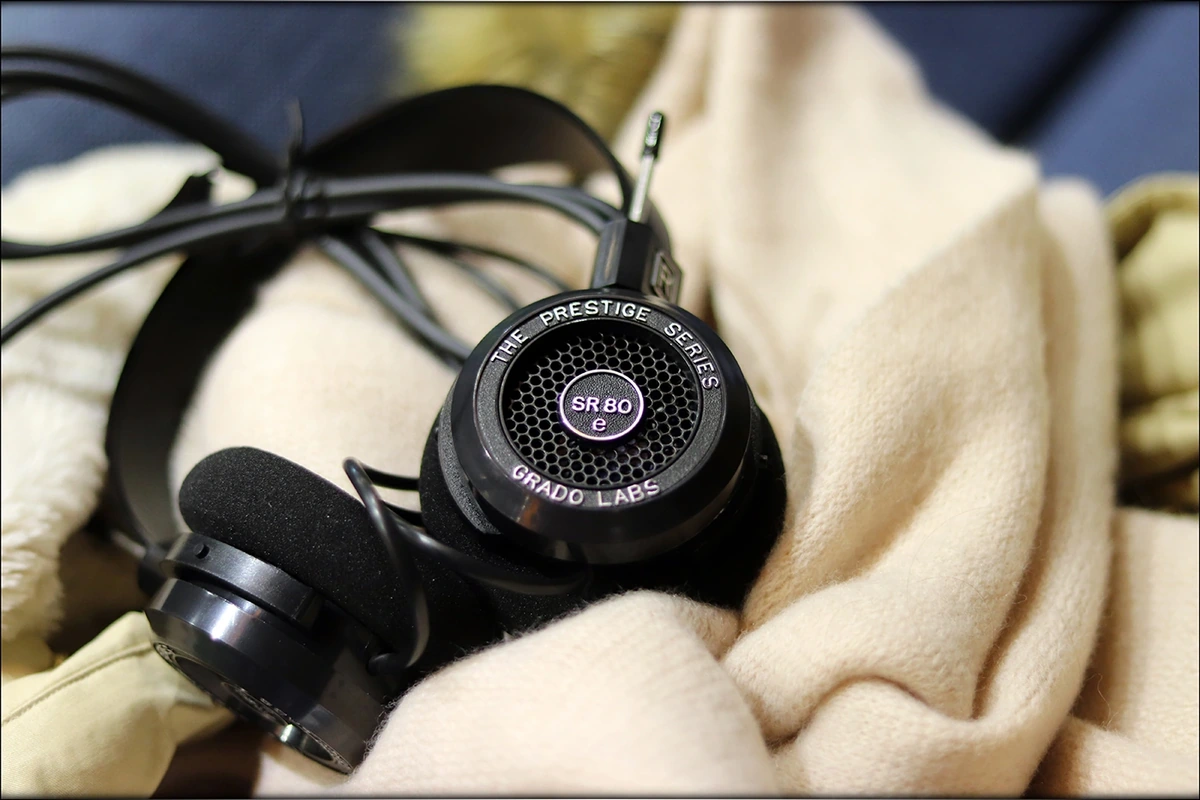
The sound is dynamic, vivid, sparkly, and punchy, especially in the midrange and the treble. The bass is rolled off, but music has good weight and thickness, enough to sound natural, and to not feel squashed out. For the 100 USD price point, it works well for rock, metal, and it is great to see a headphone made for us old-school rockers, who don’t necessarily want to spend more than 100-USD on a handy headphone.
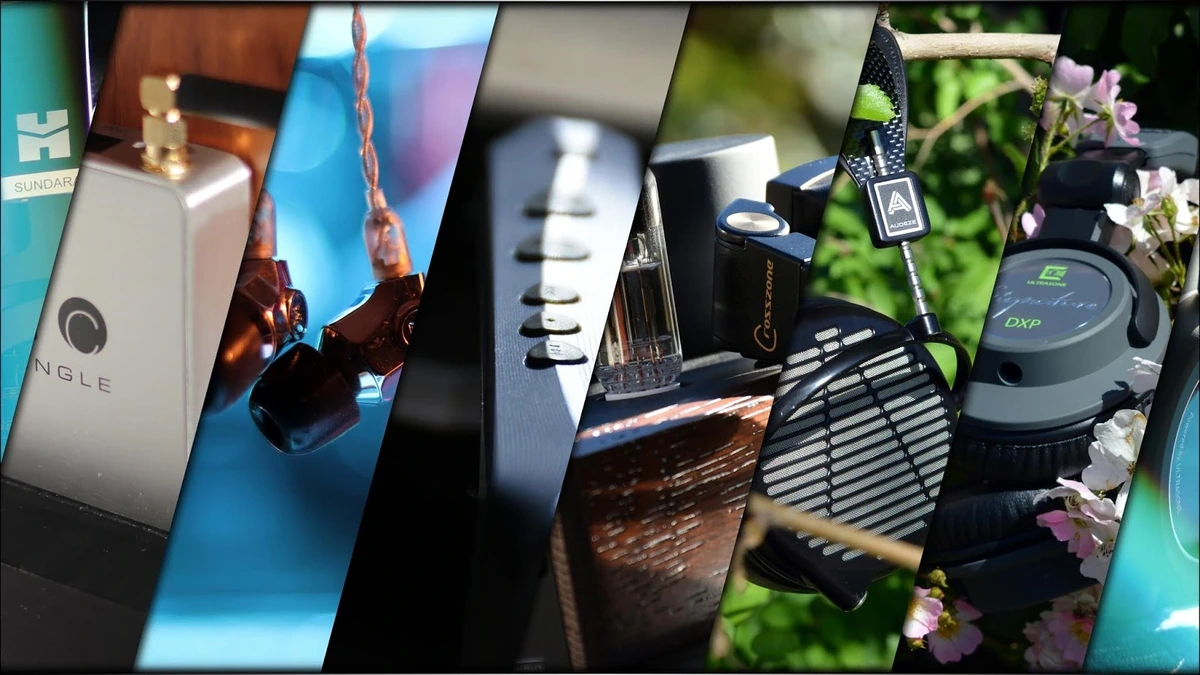
And handy it is, because it goes to Audiophile-Heaven’s Hall Of Fame. Nothing can purchase a product’s presence in my personal ranking, but sheer quality and outstanding features in some way. With SR80e, it is the price / performance ratio, and the technical ability to work well with Rock and Metal, literally touching my soul through their performance.
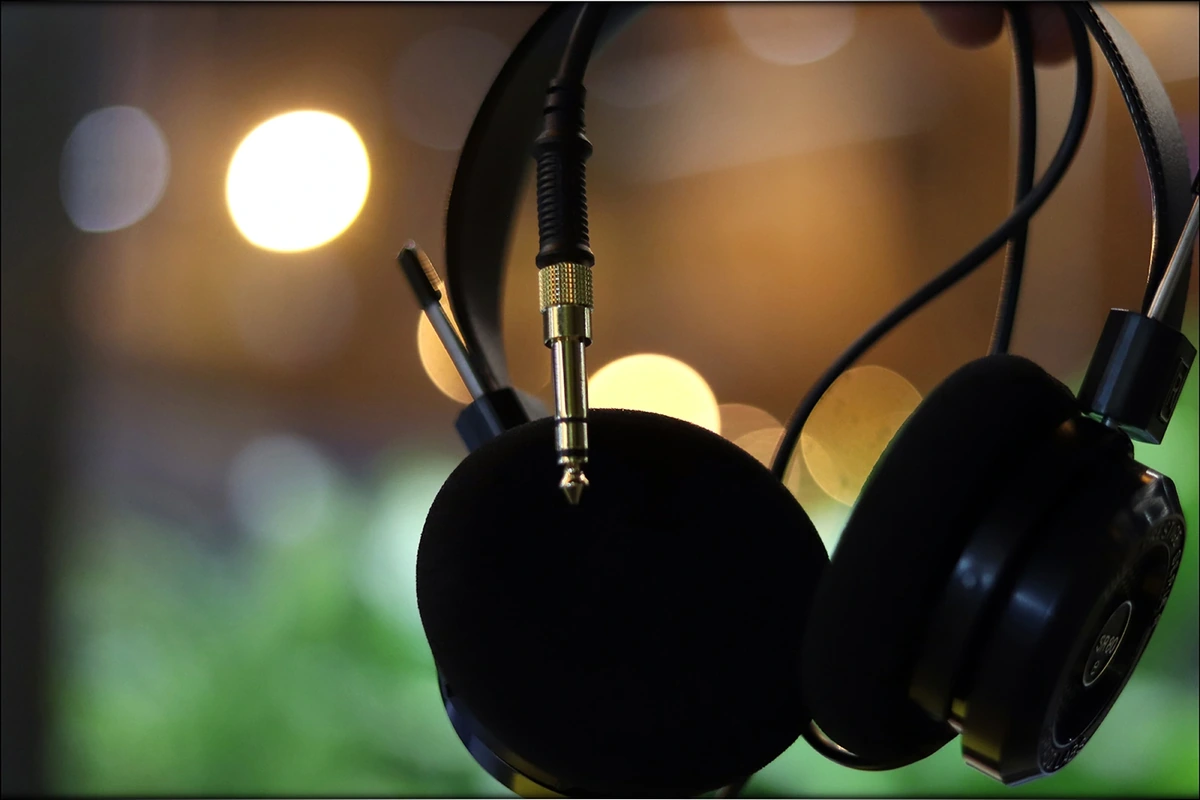
At the end of this review, if you’re looking for a good pair of entry-level headphones that play metal, rock, punk and all of the beautiful energetic music well, if you don’t mind a bit of a bass roll-off, and if you appreciate a forward midrange, a forward treble, Grado SR80e should make a long time companion for you, and bring lots of fun through the years.
Product Link
You can get Grado SR80e from www.amazon.com here: https://www.amazon.com/Grado-SR80e-Prestige-Series-Headphones/dp/B00L1LXOWS/
--- Please remember to stay safe, and always have fun while listening to music!---
- If you have a dime to spare, please donate, and help us! It would make the day brighter for me and my wife-
Full Playlist used for this review
We listened to more songs than those named in this playlist, but those are excellent for identifying a sonic signature. I recommend trying most of the songs from this playlist, especially if you’re searching for new music! The playlists are different for Spotify, Tidal and Youtube, and based on the songs I enjoy and are available on each!
https://www.youtube.com/playlist?list=PL_cjBXGmwSHSdGcwuc_bKbBDGHL4QvYBu
https://open.spotify.com/playlist/5J3oloz8Riy9LxEGenOjQ0?si=979ba4f082414be7
https://tidal.com/browse/playlist/330fd544-8e5b-4839-bd35-676b2edbb3d5
--- Contact Us ---






[…] Tuba is a very pragmatic Tube Based Amplifier, priced at 650 USD. It is designed to drive Grado and Sennheiser but also Audeze and Beyerdynamic, and it has a 5 or 35 OHM Output impedance making […]
I absolutely agree with all your assessments!
Excellent post on SR80e! I got the chance to listen to them from a friend, and I immediately ordered a pair! I would never have even considered trying them if it wasn’t for your review, George… Thanks!
When recommending headphone amp/DACs you do not mention Schiit Audio Magni and Modi. Just curious why. They are American made, quality build and reasonably priced. I am not promoting them but I am considering a purchase. It’s why I am reading headphone reviews. Just wondering if you are not familiar with Schiit Audio or unimpressed.
Hii Wayne,
Good question! I tried hearing some Schiit stuff in the past, but they are not available in romania, and after a problem with customs in Romania, they stopped answering mails, and I could never get my hands on any of their products, so it is impossible for me to say how they sound like. I am looking forward to hearing them and reviewing them too, but until they will be more open to talk, I can only recommend other stuff that I personally know 🙂
Hope this explains!
Best regards,
George
Loving your take on SR80e! I have the SR325e and I agree with everything you’ve beens aying there! Can’t wait to get an RS2e once I have enough dinero.
The Alessandro modified SR-80's may indeed address the bass rolloff.
Thank you, I will see if I can review it as well! 🙂